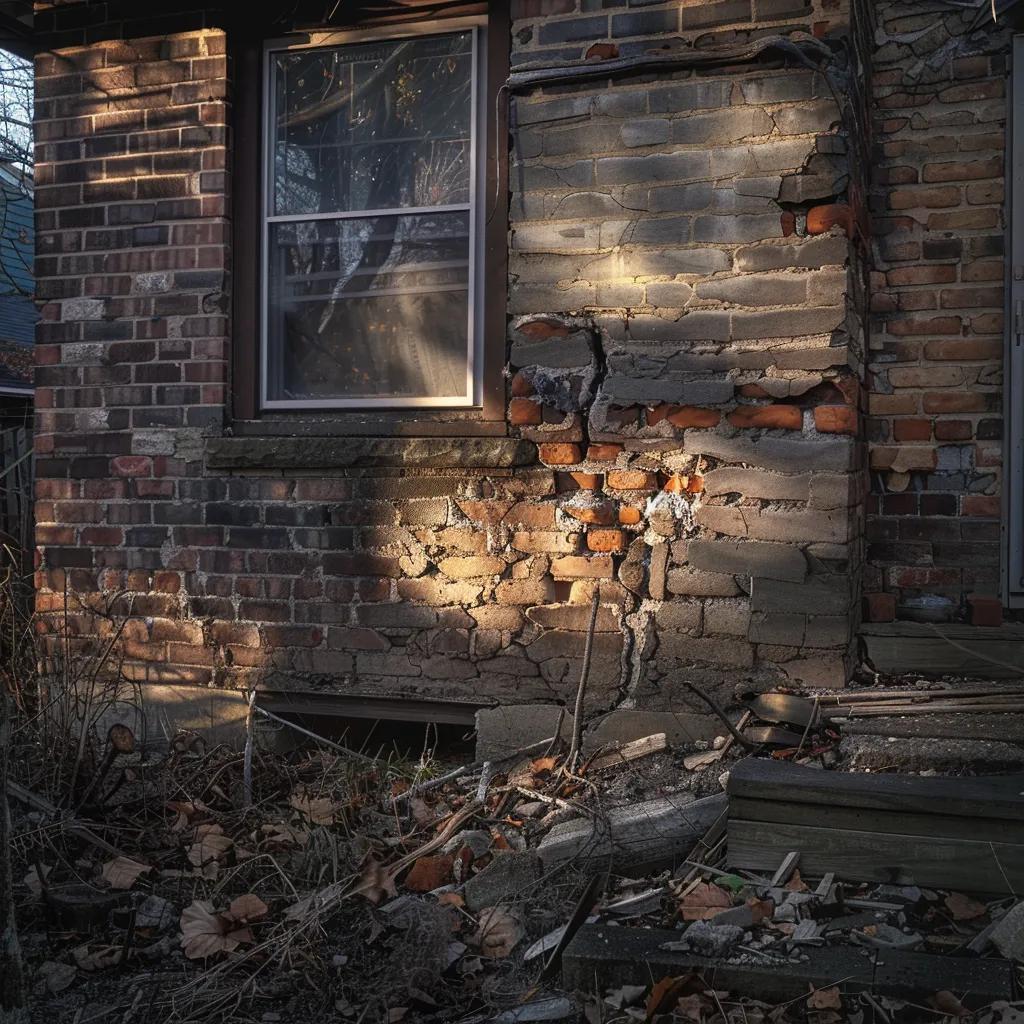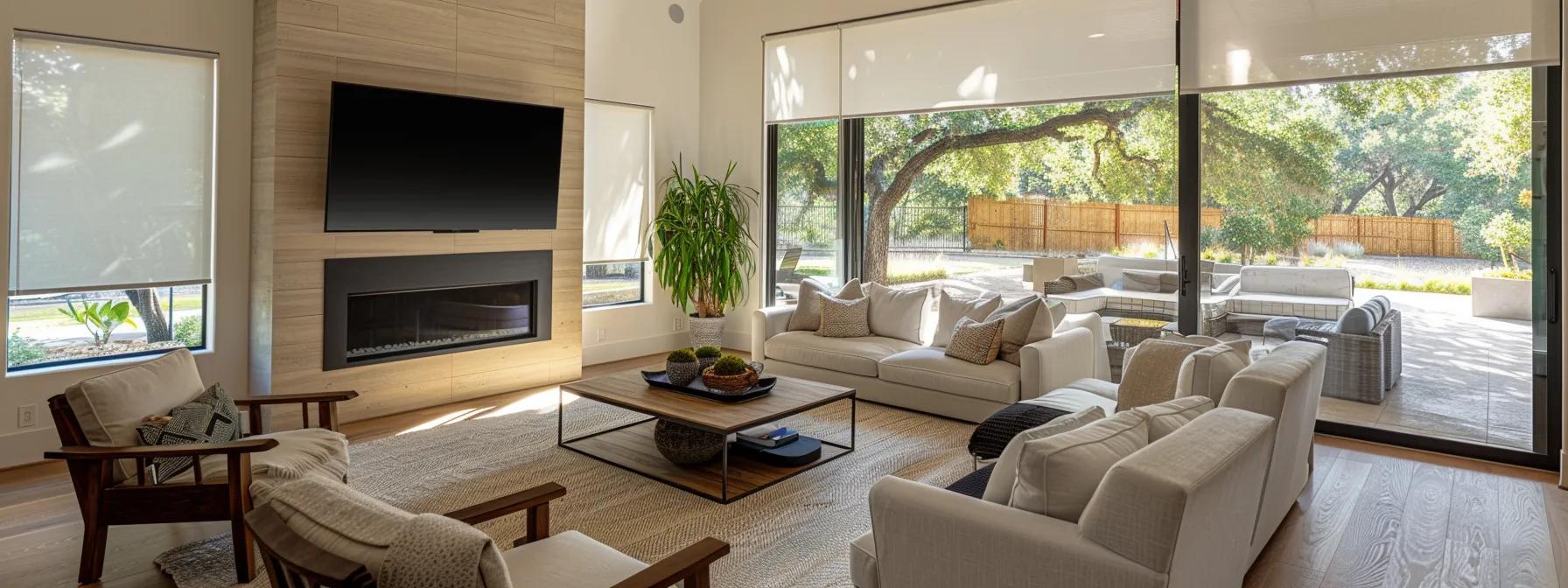FoundationInspection Details: Essential Considerations for Accurate Cost Estimates in San Antonio
Homeowners experiencing foundation issues face uncertainty regarding the severity of damage and the eventual repair costs that may be involved. A comprehensive foundationinspection not only identifies visible structural problems but also reveals underlying issues that affect repair pricing and long-term stability. In San Antonio, where soil conditions, environmental influences, and local building codes determine repair expenses, property owners must engage experienced professionals for a complete assessment. This article outlines the key factors influencing foundation repair expenses, examining inspection details, foundation types, soil effects, and various repair methodologies. This structured overview can help homeowners assess repair needs, prepare for expenses, and compare quotes from local repair companies.
Deciphering Foundation Damage Severity and Its Impact on Repair Pricing in Texas
Accurate cost estimates for foundation repair in Texas depend on the severity of damage detected during inspection. The process begins by determining whether the issues are minor or major. Minor foundation problems such as small hairline cracks or slight settling usually require less intervention and lower repair costs, while major issues demand comprehensive techniques that drive up expenses.
Identifying Minor Versus Major Foundation Problems and RepairPrice Points
Minor issues generally present as superficial cracks and localized settling with minimal impact on structural stability; repairs may include cosmetic fixes or minor underpinning. In contrast, major problems, including significant wall cracks or uneven floors, compromise safety and structural integrity and typically require reinforcement like underpinning or pierconstruction—potentially increasing repair costs by up to 50% over baseline estimates.
How Crack Dimensions and Locations Influence Repair Expenditures
The size and placement of cracks are crucial for cost estimation. Vertical cracks along load-bearing walls may indicate differential settlement and often call for specialized measures such as epoxy injection. Horizontal cracks typically signal more dangerous shifts, requiring intensive remedial action. Precise measurements of crack length, width, and depth guide professionals in selecting the appropriate repair method, and cracks in critical support areas tend to raise repair expenditures significantly.
Assessing Uneven Floors and Wall Fractures for Cost Projections in TX Homes
Uneven floors and wall fractures indicate potential load distribution problems from soil settling or drainage deficiencies. Leveling procedures or underpinning methods are commonly required to restore balance. Additional work, like rebuilding adjoining sections or installing braces, can further increase expenses. In Texas, studies have shown that addressing these issues can drive repair costs upward by 30% or more when damage is extensive.
The Financial Implications of Progressive Foundation Settling or Heaving
If progressive settling or heaving is left unaddressed, it can cause ongoing structural damage and exponential cost increases. Factors such as poor soil conditions or heavy rainfall exacerbate settlement issues. Early intervention—using measures like steel piers or enhanced drainage—can prevent costs from doubling once damage becomes severe.
Water Intrusion and Drainage Issues Affecting Foundation Repair Budgets
Water intrusion significantly contributes to foundation damage by weakening concrete and encouraging mold growth. Regions with heavy rains or saturated soils require effective drainage solutions such as sump pumps, improved landscaping, and exterior waterproofing. Failing to address water damage typically leads to repeated repairs and long-term expense increases.
How Your Home’s Foundation Type Dictates ConcreteRepair Approaches and Expenses
The foundation type of a home directly impacts the repair methodology and associated costs. Different systems—from slab foundations to pier and beam constructions—demand distinct repair techniques and materials. This knowledge is essential for accurate cost estimation and effective planning, especially in Texas where environmental and soil conditions further affect repair strategies.
Cost Considerations for Slab Foundation Repairs Across Texas
Concrete slab foundations, common in Texas, are often repaired using mudjacking or polyurethane foam injection to restore levelness and stability. Accurate cost calculations consider slab thickness, the extent of cracking, and causes such as soil movement or water penetration. Repair expenses for slab foundations vary from moderate to high depending on damage severity.
Pricing Variables for Pier and Beam Foundation Restoration in Residential Properties
Pier and beam foundations present unique challenges; repair costs are influenced by the number and location of piers and the required underpinning methods. Restoration may involve replacing or reinforcing wooden beams or addressing localized water damage near the piers. In areas with heavy clay soils, these repairs are more complex and can cost 20% to 40% more than typical slab repairs.
BasementFoundation Repair Costs and Unique Structural Challenges
Basement foundations face additional challenges including moisture intrusion and mold growth. Repair methods often involve interior waterproofing, French drains, and reconstruction of damaged walls. Because of the higher labor and material needs, basement repairs are generally more expensive than above-ground foundation solutions.
Examining Repair Expenses Associated With Crawl Space Foundations
Crawl space foundations, although less common in recent construction, present challenges such as limited accessibility, moisture accumulation, and energy efficiency issues. Repairs may require vapor barriers, improved drainage, and structural reinforcements. These additional measures typically push crawl spacerepair costs to the higher end of the spectrum while also enhancing overall home energy performance.
Material Choices for Foundation Repair and Their Cost Differences
The chosen repair materials significantly affect overall repair cost, durability, and performance. Options include epoxy injections, polymer-based sealants, and traditional concrete patching. While epoxy injections are highly effective, they are often more expensive. Polymer-based materials offer flexibility in dynamic soil conditions but also drive up the budget. Homeowners should balance upfront costs with long-term benefits and consider warranties that provide added value.
The Significance of FoundationInspection Details for Accurate San Antonio Cost Estimates
A detailed foundationinspection is critical for accurate cost estimates in San Antonio. Overlooking even minor defects can lead to unexpected expenses later. Homeowners should obtain comprehensive inspection reports to fully understand the scope of foundation damage, plan interventions, and secure reliable contractor quotes.
Securing Comprehensive Foundation Assessment Reports in San Antonio
A thorough foundation assessment sets the baseline for repair costs. Detailed reports document visible defects such as cracks, wall fractures, uneven floors, and water damage. Advanced tools like laser levels, moisture meters, and high-resolution cameras ensure precise measurements and effective documentation, providing a reliable reference when comparing contractor quotes.
What to Anticipate During a San Antonio FoundationEvaluation Process for Budgeting
During an evaluation, homeowners should expect inspectors to assess both visible and hidden aspects of the structure. Exterior factors such as drainage, landscaping, and soil composition, along with interior elements like wall alignment and floor levelness, are scrutinized. The process typically includes discussions about potential repair methods, cost estimates, and recommendations regarding urgent versus non-urgent repairs—all crucial for confident budget planning.
How Thorough Inspections Prevent Unexpected Repair Costs in San Antonio Projects
Thorough inspections help prevent unexpected expenses by identifying all potential issues from the start. Overlooked moisture intrusion or small cracks can worsen over time, resulting in higher repair bills. Detailed documentation allows homeowners to implement comprehensive solutions during the first round of repairs, thereby reducing the likelihood of additional work later.
Utilizing Inspection Findings to Compare San Antonio FoundationRepair Quotes Effectively
Inspection reports serve as benchmarks when comparing contractor bids. Homeowners can request itemized estimates based on documented defects, ensuring transparency and fairness. This approach minimizes the risk of overpaying while ensuring that all necessary repairs are adequately addressed.
Essential Considerations From an Inspector for Realistic Repair Budgets in San Antonio
Inspectors offer valuable insights that influence realistic budgeting. They emphasize the need for immediate structural repairs as well as preventative measures such as improved drainage and soil stabilization. Including these recommendations in the budget helps ensure long-term structural integrity and reduces future financial burdens.
Analyzing Key Factors That Influence the Cost of FoundationRepair in San Antonio Homes
Foundation repair costs in San Antonio are influenced by several factors beyond visible damage. Homeowners must consider elements ranging from property accessibility to home size and architectural design to budget effectively.
Property Accessibility and Its Role in Determining San Antonio Repair Pricing
A property’s accessibility significantly affects repair costs. Hard-to-reach areas, like narrow driveways or confined backyards, require more time and specialized equipment, thereby increasing labor costs. Clear communication with contractors about site access is essential to ensure that logistical challenges are factored into the final estimate.
The Effect of Home Size and Architectural Design on Foundation Repair Costs in San Antonio
Larger homes generally require more extensive repairs due to increased concrete volume and complexity. Unique architectural features such as irregular rooflines or expansive basements add to the challenge and cost of achieving a uniform repair. Custom-designed homes often need bespoke solutions, driving costs higher compared to standard designs.
Local San Antonio Material Sourcing and Labor Rate Fluctuations Impacting Price
Material sourcing and local labor rates are critical components of foundation repair costs. Fluctuations in the prices of quality concrete, steel, and waterproofing membranes, coupled with labor shortages or high demand, can increase overall expenses. Obtaining multiple quotes helps ensure that homeowners secure competitive pricing aligned with industry standards.
Permit Requirements and Potential Engineering Needs for San Antonio Foundation Work
Permit requirements and engineering consultations add to repair costs. Depending on the repair scope and local building codes, permits and engineering services may be mandatory, potentially leading to additional fines or delays if not addressed early. Incorporating these costs during the planning phase results in a more realistic and comprehensive budget.
Obtaining and Comparing Detailed Quotes From San Antonio FoundationRepair Specialists
Homeowners should obtain detailed, itemized quotes from multiple specialists. Each quote must list labor, materials, permit fees, and any additional costs due to site accessibility or specialized equipment. Comparing these quotes against the inspection report ensures that every repair aspect is covered without hidden expenses.
Soil Conditions and Environmental Elements Affecting Texas Foundation Repair Budgets
Soil conditions and environmental factors are key influences on foundation repair costs in Texas. The state’s diverse soil types—from expansive clays to sandy or rocky substrates—require tailored repair techniques. Environmental factors such as drought, heavy rainfall, and tree root intrusion also affect foundation stability and overall repair expenses.
The Impact of Expansive Clay Soils Common in Texas on Foundation Stability and Costs
Expansive clay soils undergo significant volume changes with moisture fluctuations, causing cracks, settlement, and structural instability. Repairing damage in these soils often requires specialized techniques such as underpinning and soil stabilization, which can increase repair costs by up to 40% compared to stable soils.
Addressing Drought and Heavy Rainfall Effects on Foundation Integrity and Repair Expenses
Texas experiences cycles of drought and heavy rainfall, each affecting foundation stability differently. Drought can cause soil contraction and settlement, while heavy rains may lead to expansive soil conditions and water intrusion. Mitigating these effects often requires enhanced drainage systems, soil additives, or additional waterproofing, which add to the repair cost.
Tree Root Intrusion and Associated Foundation Repair Expenses in TX Neighborhoods
In many Texas neighborhoods, mature trees may cause foundation problems as roots intrude and disrupt soil stability. Addressing tree root intrusion involves root removal, installing root barriers, and using specialized repair methods. These interventions typically require extra labor and equipment, driving up overall repair costs.
Landscape Grading and Drainage Solutions to Mitigate Future Foundation Costs
Proper landscape grading and efficient drainage are fundamental in reducing future repair expenses. Poor grading leads to water pooling and exacerbates intrusion issues. Correcting the landscape through regrading, installing French drains, or repairing gutters directs water away from the foundation, protecting long-term stability and lowering future costs.
Regional Soil Variations Within Texas and Their Specific Cost Implications for Repairs
Texas soils vary by region; sandy soils, for example, may require different stabilization techniques than expansive clays. Rocky soils can make excavation more challenging and expensive due to the need for heavy machinery. Each soil type necessitates unique repair strategies, and local contractors provide region-specific estimates based on these conditions.
Understanding Different Foundation Repair Methodologies and Their Respective Cost Structures in TX
Foundation repair can be approached using various methodologies, each with its cost structure and applications. Understanding the pros and cons of each approach helps homeowners select the most appropriate method for their specific damage patterns and soil conditions.
Cost Breakdown for Concrete Press Piling and Drilled Pier Repairs
Concrete press piling involves forcing precast piles into the ground without significant excavation, effectively supporting settling foundations. Drilled pier repairs require drilling holes and pouring reinforced concrete piles, a process that is typically more labor-intensive. In Texas, the choice depends on settlement severity and soil conditions, with cost differences of approximately 15% to 25% between the methods.
Steel Pier Systems: Their Installation Process and Price Points in Texas
Steel pier systems offer robust support and are especially effective in areas with significant settlement or shifting soils. Installation involves setting steel piers beneath the foundation and securing them with concrete. Although steel piers are among the most expensive options, their durability and low maintenance can justify the higher initial expense. Price points vary widely based on the number of piers required and site accessibility.
Polyurethane Foam Injection Costs for Foundation Leveling and Void Filling
Polyurethane foam injection is a minimally invasive method used to level foundations and fill voids resulting from soil erosion or settlement. It involves injecting expanding foam under the slab to lift the foundation into place. This method generally has a lower upfront cost than more invasive techniques, though its long-term performance in extreme soil conditions should be considered.
Comparing Mudjacking and Polyjacking Price Points and Applications
Mudjacking, which uses a slurry mixture to fill voids, and polyjacking, which employs expanding foam, are used to correct uneven foundations. While polyjacking offers quicker curing and reduced weight, it is usually more expensive than mudjacking. The choice between the two depends on the extent of settlement and the specific repair needs, with polyjacking providing greater longevity for minor to moderate issues.
The Expense Differences Between Interior and Exterior PierInstallation Methods
Interior pier installations can be more disruptive because they involve removing and reinstalling flooring and finishes, leading to higher labor and material costs. Exterior installations typically have easier access and cause less disruption, although careful coordination with landscaping still influences the cost. Homeowners need to consider these differences when comparing quotes.
Frequently Asked Questions
Q: What should homeowners look for during a foundationinspection? A: They should check for visible cracks, water intrusion, uneven floors, and wall fractures, and request a comprehensive inspection report for both visible and hidden defects to understand the full scope of repairs needed.
Q: How do soilconditions affect foundation repair costs? A: Soil conditions—whether expansive clay, sandy, or rocky—directly influence the choice of repair techniques and can significantly increase repair costs, with unstable soils potentially raising costs by up to 40%.
Q: Are permit requirements a significant part of the repaircost? A: Yes, obtaining permits and potential engineering consultations add to the budget, as local regulations in San Antonio often require detailed inspections and adherence to building codes.
Q: What is the typical lifecycle of foundation repairwork in San Antonio? A: With proper maintenance, including good drainage and soil stabilization, foundation repairs can last between 15 and 30 years.
Q: How do repairmethods differ between slab and pierand beam foundations? A: Slab foundations may be repaired using techniques such as mudjacking or polyurethane foam injections, while pier and beam systems typically require more intricate underpinning or additional pier installations depending on the damage.
Q: Can multiple repairmethodologies be used simultaneously in a single project? A: Yes, contractors often combine methods—for example, using both steel pier installations and polyurethane foam injections—to address complex or diverse damage areas.
Q: How can homeowners minimize future foundation repair costs? A: Proactive measures including proper drainage, regular inspections, landscape grading, and preventive waterproofing can help maintain foundation stability and avoid costly future repairs.
Final Thoughts
Accurate foundation inspections are essential for realistic repair budgeting and long-term structural stability. Every factor—from crack dimensions to soil conditions and material choices—affects repair costs. Homeowners in San Antonio can better prepare by obtaining comprehensive inspection reports, comparing detailed contractor quotes, and implementing preventive measures. Investing in precise inspections and tailored repair methods not only minimizes future repair costs but also enhances the safety and longevity of the home.


